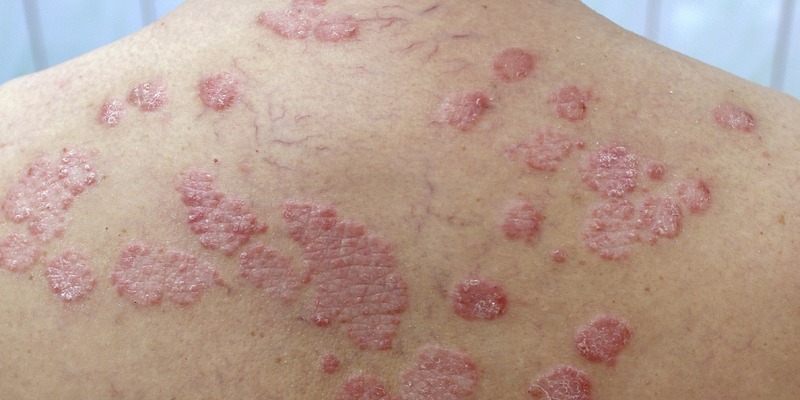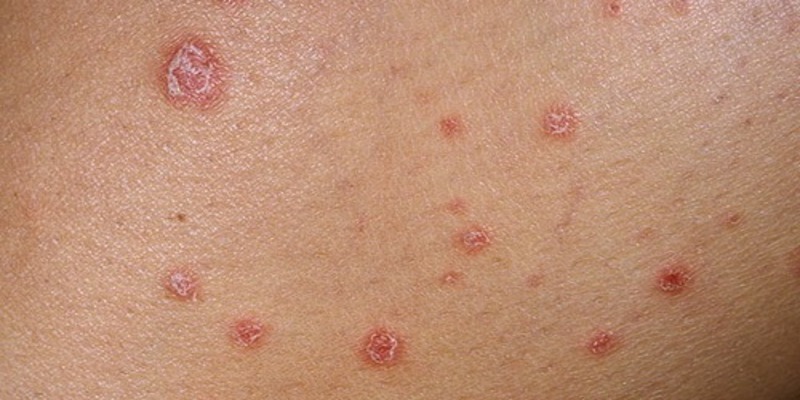Rash symptoms from psoriasis might vary widely. Psoriasis comes in several different forms, and while each has its unique characteristics, it can be difficult to tell them apart at first look.
This will describe the many forms of psoriasis, go through some of the more common treatments, and provide images of the various rashes resulting from this condition.
What Exactly Is Psoriasis, And What Causes It?

The autoimmune disease psoriasis is persistent and often disfiguring. Psoriasis is characterized by an abnormally rapid skin cell turnover, leading to dead skin accumulation. Psoriasis is not contagious, yet it may affect anybody.
Psoriasis comes in various forms and can have active and inactive phases like other autoimmune illnesses. You're not limited to just one variety, though. Common psoriasis precipitating factors include:
- Particular Medications
- skin infections and wounds
- stress
- smoking/drinking
- abrasions or scrapes to the skin
Exactly How Does Plaque Psoriasis Manifest Itself?
The National Psoriasis Foundation estimates that 80–90% of psoriatic individuals suffer from plaque psoriasis. Because of this, it is the most prevalent form of psoriasis. A skin rash caused by plaque psoriasis looks like thick, red, elevated areas.
It appears red and scaly on fair skin and sometimes has a silvery film on top. The plaques are more noticeable and appear purple, gray, or a deeper brown on highly pigmented skin. Although plaque can form anywhere on the body, it often does so on the:
- scalp
- elbows
- knees
- lumbar region
Can You Describe The Appearance of Inverse Psoriasis?
Extensive research conducted in 2016 found that between 21 and 30 percent of people living with psoriasis also have inverse psoriasis. One of the names for inverse psoriasis is "intertriginous psoriasis."
Rashes from inverse psoriasis tend to be glossy and smooth. Redder than usual, especially on fair skin. There's a chance it'd seem more purple or dark brown on darker complexion tones. Plaque psoriasis symptoms, such as scaling, are absent. As a result, it can manifest in areas where bare skin rubs against bare skin, leading to:
- underarm
- low on the thigh
- in the crotch area
- increases of the skin
How Does Guttate Psoriasis Look?

Guttate psoriasis affects roughly 8% of people living with psoriasis, according to a study of 1,593 sufferers published in 2009.
Small, red, elevated papules are the telltale sign of this psoriasis rash type. There are instances when they seem scaly. The spots might seem red if you have light skin, but if you have a darker complexion, they could appear purple or brown.
An individual of any age can develop guttate psoriasis. However, for most people, this begins throughout their formative years. Streptococcus pharyngitis and tonsillitis are two infections that might lead to its onset.
Alternate Psoriasis Subtypes
The skin is not off-limits for psoriasis. It may manifest itself in a single location or spread to others. One may provide the following as an illustration:
- hair loss from scalp psoriasis
- psoriasis of the nails, which can result in pitting, crumbling, or even the separation of the nail from the finger or toe
- Genital psoriasis, which is not contagious but can be embarrassing during sexual activity.
The most prevalent forms are plaque, inverted, and guttate. Other examples include:
Psoriasis Pustulosis
Pustular psoriasis often appears on the feet, hands, scalp, nails, and soles. White, crusty blisters full of pus are known as pustules. The skin around painful blisters is often red, irritated, and readily breaks.
Psoriasis Erythrodermic
Psoriasis erythematosus, often known as erythrodermic psoriasis, affects the skin severely. The most noticeable sign is a widespread, dry rash.
The rash shows up as a red color on fair skin. It may seem more purple or gray on darker skin tones. It can mimic the appearance of burnt skin. Additional signs may include:
- shedding
- The Pain Is Terrible
- itching
What Methods Are Used To Treat Psoriasis?
Whether or whether psoriasis treatment is successful is dependent on the following:
- the site of rash occurrence
- the degree of severity
- underlying medical issues, such as psoriatic arthritis
Although the rash's visibility may vary depending on one's skin tone, this does not impact how it is treated.
Topicals
Most patients are first prescribed topical treatments such as lotions and ointments be used topically. Topicals come in various forms and can cover a wide range of strengths.
The good news is that your doctor can quickly transfer you to a different medication if the first one doesn't seem to be doing the trick. Some examples of such themes are:
- emollients
- corticosteroids
- Vitamin D topical lotions
- The calcineurin inhibitors
Light-Based Treatments
Light treatment may usually be done in a dermatologist's clinic. Phototherapy with either UVA or UVB or both may be used to achieve this. In some cases, an excimer laser may be used.




